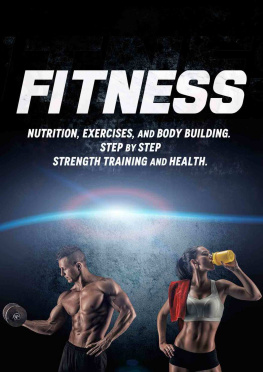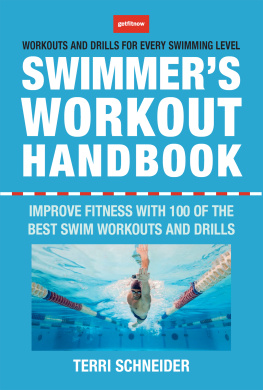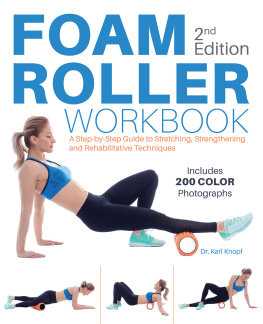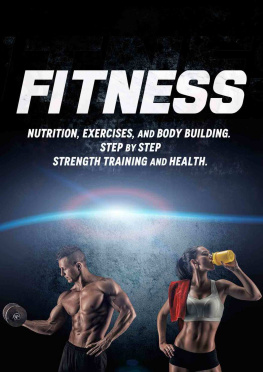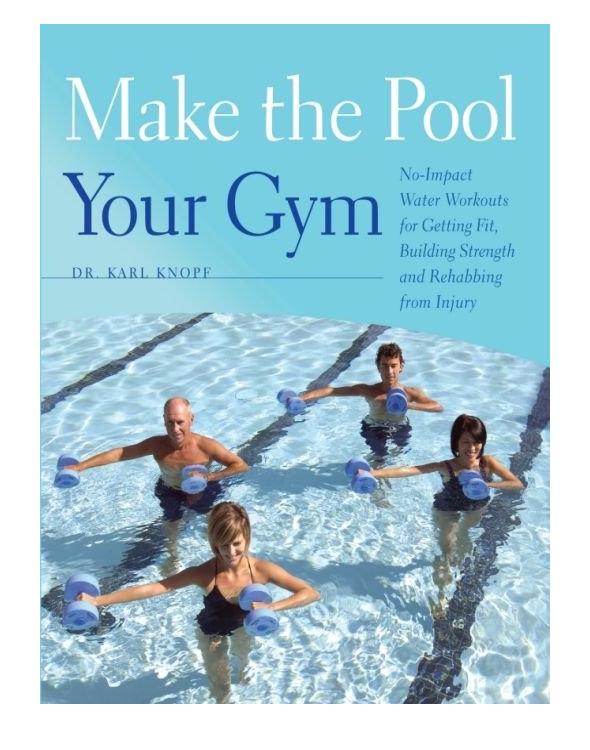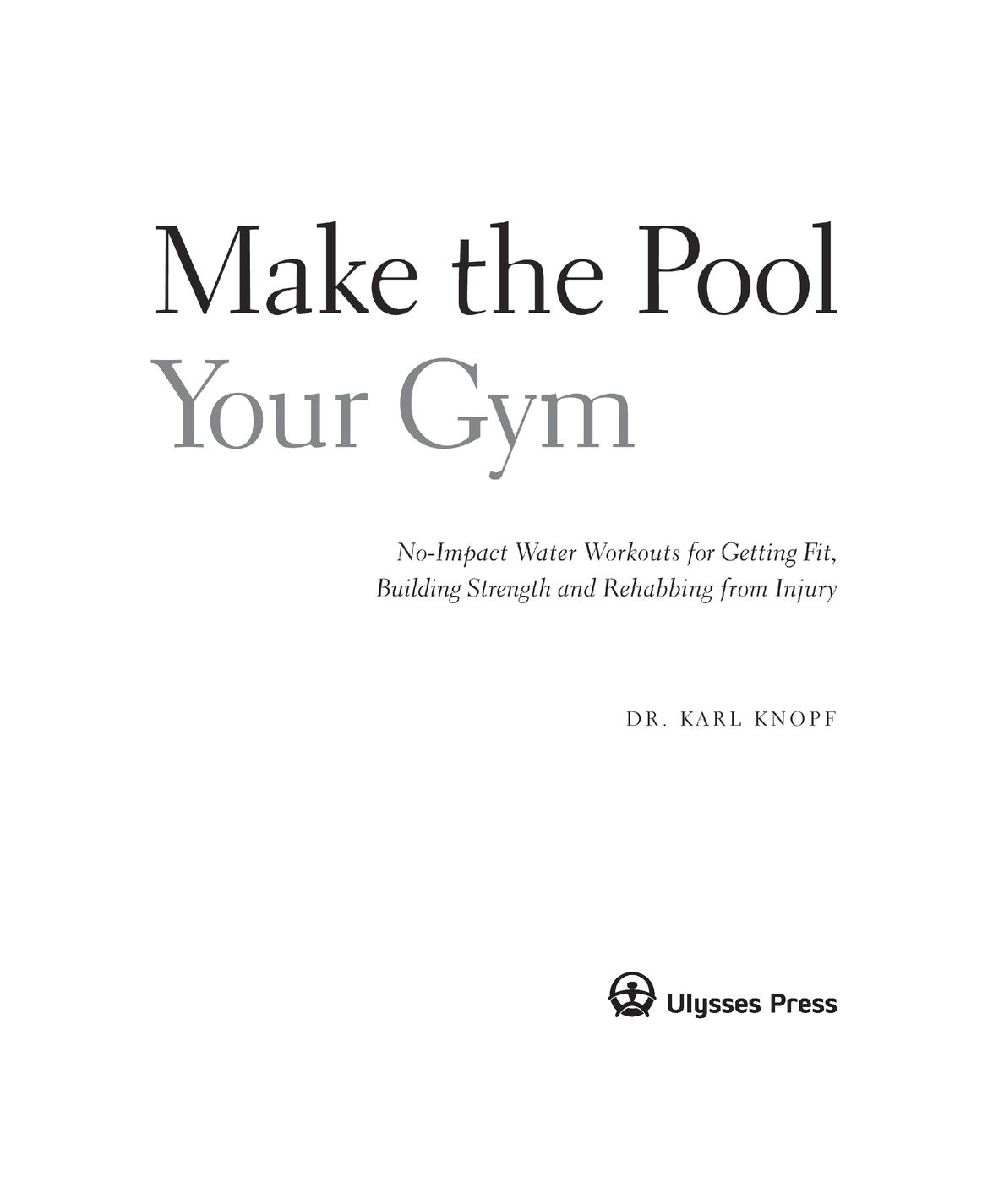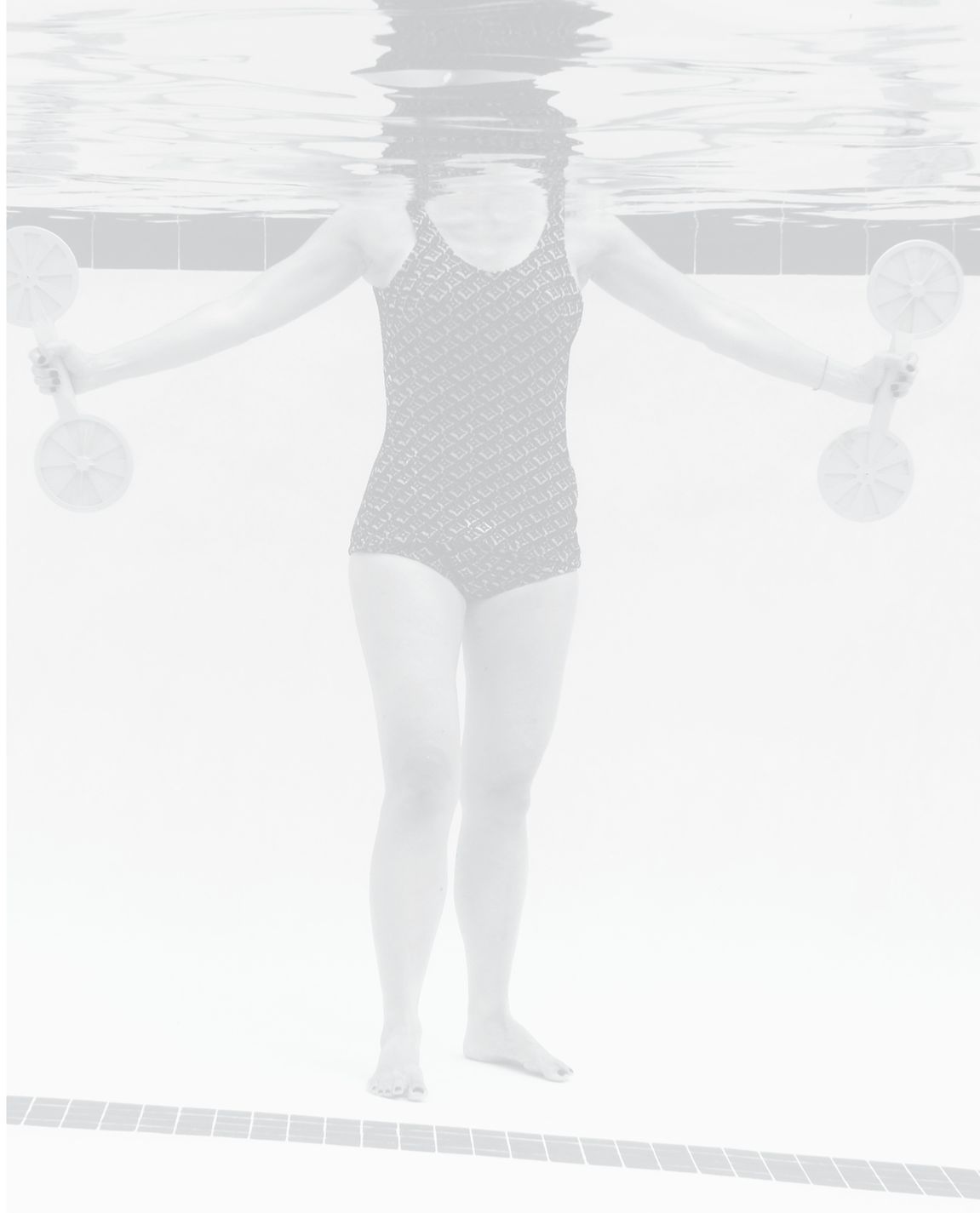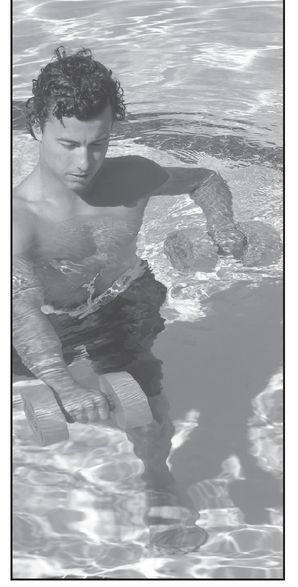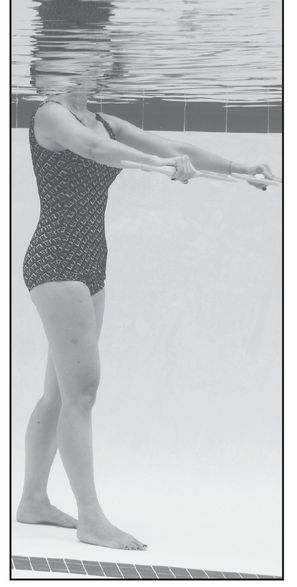Table of Contents
part 1
started
introduction
Water is a critical component of life. Yet when most people hear the word water, they think of hydration. In Make the Pool Your Gym, we show you how to exercise in itbeyond the old standby of swimming. The ability to swim is not required, and you dont even need to get your hair wet. Water workouts are a sensible and comprehensive way to exercise without subjecting the body to the same stress thats placed on it during land-based programs.
The beauty of water exercise is that it can accommodate the fitness needs of everyone. Its generally considered safe for people with arthritis and musculoskeletal problems, and warm water is very beneficial for people with joint stiffness and pain.
Water exercise is not just land exercise in the water. However, just like land-based exercise programs, water fitness benefits range from helping to control blood sugar levels to improving aerobic fitness. A study in 2009 found that aquatic exercise helped relieve chronic back pain more effectively than land programs. Water exercise has also been proven to be helpful for pregnant women with back pain.
Whether youre a serious athlete, a fitness enthusiast, a beginner, or someone with a chronic condition, water exercise can efficiently improve cardiovascular performance and strength in a very short amount of time. Its ideal for cross-training or a total-body workout, and can also be used as an introductory mode of exercise.
Make the Pool Your Gym invites you to explore this safe and effective alternative way to getand stayfit. If youre tired of workouts that leave you feeling more battered than better, water workouts may be the solution.
why water exercise?
Water exercise isnt new; its been around since 200 B.C. Much of the current field of aquatic rehabilitation has its roots in the European and early American spa world. Social bathing was also an important part of ancient Greek and Roman culture. Since earliest recorded history, water has been believed to promote healing and has been widely used in the management of medical ailments.
Natural springs and water therapies became a central focus of many health spas and healers from all backgrounds, who noted the positive effects of water on various medical conditions. Its through observation and centuries of trial and error that todays scientific methodology of aquatic treatments have evolved.
The popularity of water classes has increased from 500,000 in the 1990s to over 4 million today, with the water fitness movement partly fueled by the aquatic rehabilitation exercises done by high-profile athletes such as Nancy Kerrigan, Bo Jackson and Carl Lewis. The beauty of a water workout is that it serves both ends of the fitness spectrum, from people with severe chronic conditions to world-class athletes. Note that you dont need to be a swimmer to do water workoutsnon-swimmers or people who dont want to get their hair wet can take aquatic classes in shallow, waist-deep water.
Water fitness has a long list of benefits and a very short one of risks, and current wellness educators are looking at the aquatic environment as a safe, effective and inexpensive way to preserve health and treat disease. Its the open door to health and wellness for many people who have limited abilities and chronic conditions. In addition to its role in rehabilitation and physical therapy, water exercise can also provide a strenuous workout for elite athletes.
Advantages of Water Fitness over Land Exercise
Water workouts offer numerous advantages over land workouts. Some high-level trainers use water as a method to engage in sports conditioning or as a way to employ plyometrics. Since water is far denser than air, water can apply up to 12 times greater resistance. The harder you push and pull during a water workout, the more productive it becomes. The resistance of water challenges beginners to highly conditioned athletes alike. Fortunately, water workouts have a built-in safety feature that land workouts lack. Since the amount of resistance in water depends on the speed of movement, you cant create more resistance than your body can tolerate.
WATER EXERCISE VS. SWIMMING
While swimming is an excellent vehicle for building muscle tone and endurance, its limited to using the same set of muscles over and over again. Water exercise offers far more options and goes from horizontal to vertical, thus providing a comprehensive workout in multiple planes. This means participants can perform motions in any and all angles not available on standard exercise machines. The goal of any well-rounded workout is to provide a total-body workout that engages major muscle group. Because water provides natural resistance to body movements, water exercises strengthen complementary muscle groups simultaneously. No land-based routine is as time efficient.
Heart rates during water exercise are lower than during land-based training but you can still obtain the same physiological benefits with less heart-pounding exercise. Despite this, the common belief that water workouts burn less fat and fewer calories than other exercise is false. Aquatic aerobics can burn 400 to 700 calories an hourabout the same as land-based aerobics, but all without placing any strain on the joints while stimulating circulation. One recent study found that a one-hour water exercise session performed at a moderate pace expends the same amount of calories as walking for one hour at a pace of 3 miles per hour.
A Kinder, Gentler Way to Fitness
A decade ago, aqua exercise classes were few and far between and, when people heard the term water exercise, they thought of ladies at the retirement home doing simple moves. Today, water exercise is no longer just for grandmas. While water is the perfect element for people with joint problems to exercise in because it diminishes the effects of gravity and allows movements that would be painful and difficult on land to be performed with greater ease, it offers several advantages over land, including greater buoyancy and better resistance, plus being a whole lot more enjoyable.
Standing in neck-deep water, a person weighs about 10 percent of what he or she does on land. This effect, coupled with the cushioning property of water, places less pressure on the joints. This is especially beneficial to arthritis sufferers, athletes with joint or overuse injuries, and overweight people. Weekend warriors who are beat up from overtraining but wont take a day off for fear of de-conditioning might consider cross-training in water to maintain their fitness level. Some athletes can improve performance by taking time off to cross-train in the pool. Non-impact deep-water running, for instance, has been proven to successfully hasten cardiovascular performance in athletes with overuse injuries.





